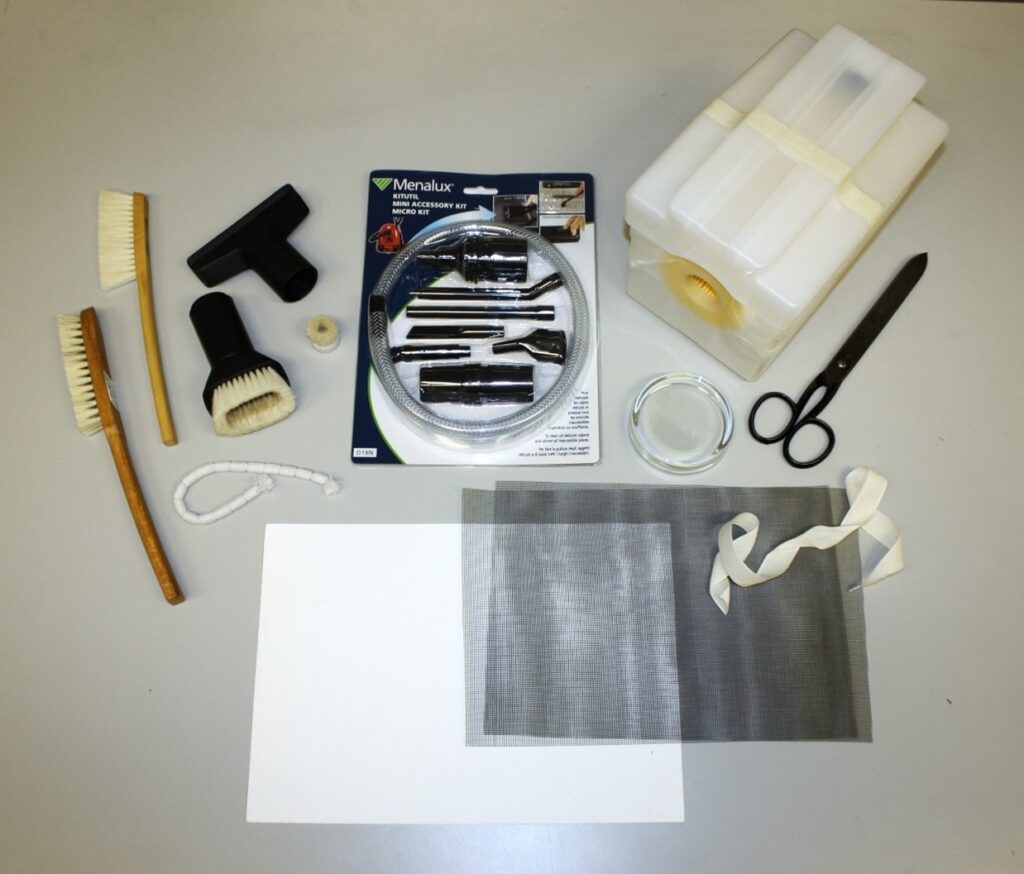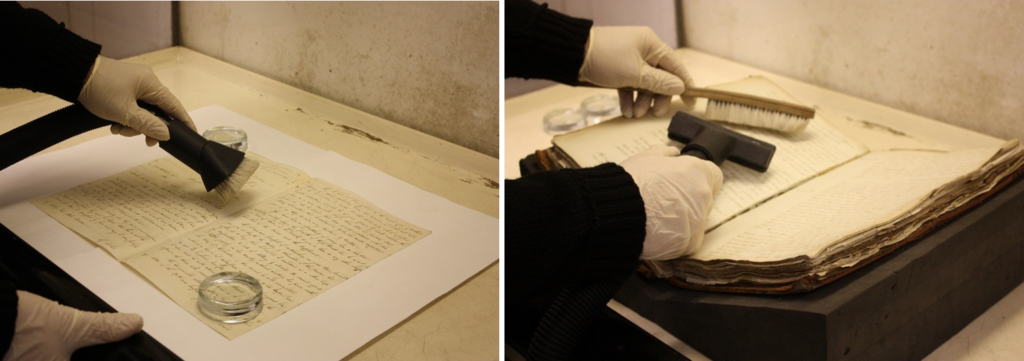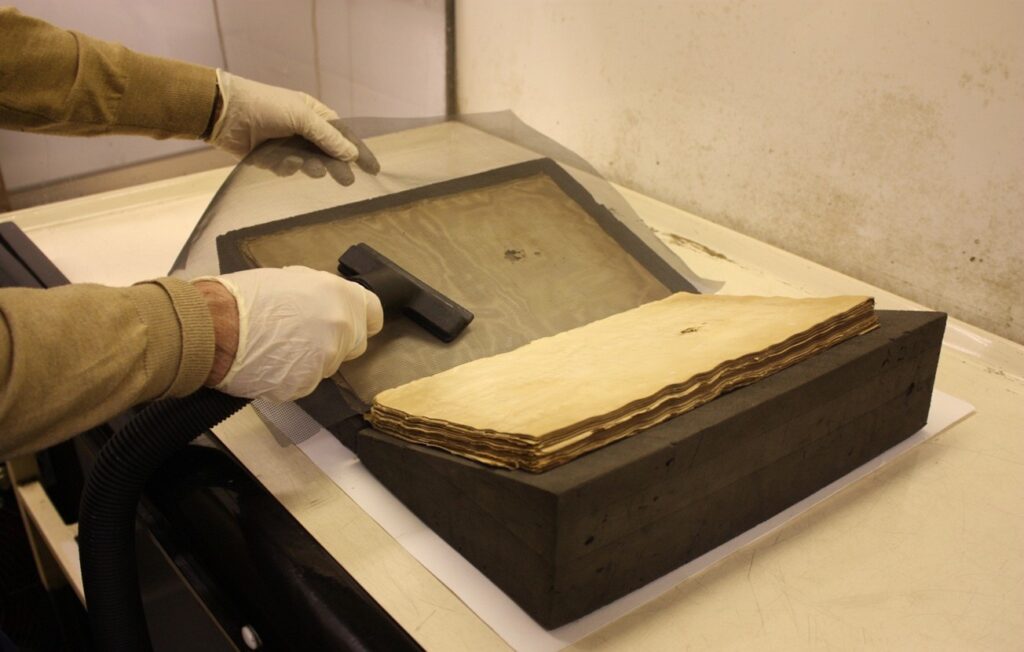Treating active mould
Treatment should not be undertaken while mould is active. This presents a health risk to those working with it and can cause transfer to other areas of the collection. Active mould relies on moisture to grow, so to prevent further spread and prepare it for remediation, overall humidity must be reduced. This can be undertaken in several ways, and the most appropriate method will be determined by the extent to which the collection is affected:
- For substantial infestations, freezing may be appropriate. This can halt growth and may kill active conidia (microscopic spores). However, it does not remove moisture from affected material and there is a risk that mould may reactivate after thawing. As such, it should be undertaken with the guidance of a conservation professional and/or commercial recovery service only.
- For smaller infestations, deactivation can be achieved by placing affected material into a local exhaust ventilation (LEV) cabinet for a minimum of forty-eight hours, with an RH below 50%, or by placing it in a well-ventilated space with good air circulation, away from the wider collection to prevent dispersal. During deactivation, the environment should be monitored to ensure that conditions stay within the desired range.
- Electric fans can be employed to increase airflow and portable dehumidifiers used to decrease ambient humidity. However, it is important to be aware that interventions designed to accelerate drying speed can lead to damage of the affected material (i.e. cockling of paper, or distortion of book covers), so should be used with care.
- Fungicidal and fungistatic treatments are not recommended. They are often toxic, can damage collection material, and present a health risk to those working with them. They should not be attempted without the advice of a conservation professional and a Control of Substances Hazardous to Health (COSHH) risk assessment in place.
Treating inactive mould
The following suggestions are guidance only. Each item will require individual assessment and treatment. It is important to be aware that cleaning only removes some of the loose mould and cannot remove staining.
When active mould has been dehydrated, treatment can be undertaken. For this, you will need:
- A suction-controlled high efficiency particulate air (HEPA) filtered vacuum cleaner
- Replacement HEPA filters
- Vacuum attachments (i.e. upholstery and brush tools)
- Mini-micro vacuum toolkit
- Soft natural-bristled brushes (i.e. goat hair)
- Nylon mesh
- Chemical sponge
- Handling aids (i.e. weights, book wedges)

Tools and equipment for mould removal
Treatment of inactive mould should be undertaken within an LEV cabinet or in a well-ventilated space. Work surfaces should be non-porous and easy to clean, or should be protected with disposable coverings (i.e. polythene sheeting).
Loose mould can be removed from the surface of collection material, using a soft brush to move it carefully toward the nozzle of a HEPA filtered vacuum cleaner, or by using a soft-bristled vacuum brush tool.

Figure 4 – removal of loose mould from a document surface using a vacuum brush tool (left) and a handheld brush and vacuum combination (right)
Vacuum suction should be adjusted to prevent damage to fragile collection material and where necessary, handling aids used to provide support (fig. 4). Passing the brush horizontally then vertically across the surface of the object will ensure thorough cleaning. If the document is particularly fragile, it can be cleaned through a nylon mesh to prevent damage or loss (fig. 5).

Cleaning of a fragile surface through nylon mesh